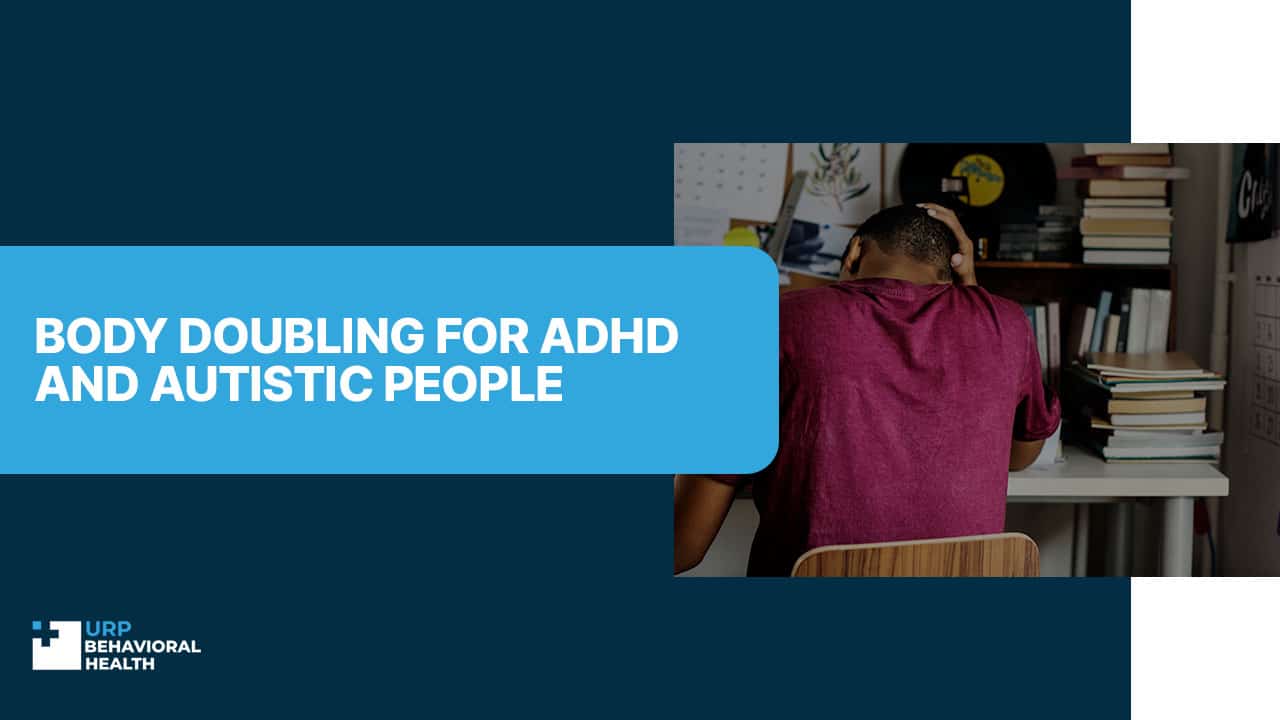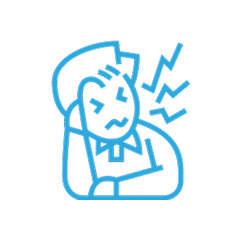
Body Doubling for ADHD and Autistic People
Living with ADHD or autism is difficult due to specific brain functionality. Even the simplest everyday routines often look unbearable for people with ADHD and autism, making their integration into social life, studies, work, and overall activity challenging.
Fortunately, modern healthcare provides effective and consistent treatment to ease the burden of being neurodivergent. Body doubling is among such treatment techniques that might come in handy for the successful maintenance of everyday habits and routines.
Let’s get more information about what is a body double for ADHD and autism as one of their stabilizing practices in our blog.
What Is Body Doubling?
Body doubling is the practice of doing some bothersome yet necessary task accompanied by someone else. The doubling person can be merely present at the moment, be engaged in doing the same task, or supervise and help do it.
Why do people with autism and ADHD need such practice to cope with a task a neurotypical person can do with ease? The principle is hidden in the peculiarities of brain functions characteristic of these two disorders. [1]
Attention deficit hyperactivity disorder (ADHD) is a neurodevelopmental issue that has executive dysfunction among other characteristic symptoms. Due to the brain functioning in another way than in other people, an ADHD person finds concentration difficult, cannot focus on a certain task, and rapidly becomes frustrated with it. Scientists claim this happens due to disruptions in the dopamine pathway in the brain.
Dopamine is a hormone in charge of feelings of motivation and pleasure, and these disruptions make ADHD persons nervous, unmotivated, and displeased with what they do. They quickly shift to another task or activity and cannot finish the previous one.
There are various types of brain dysfunctions in the autistic spectrum, and all of them are also of neurodevelopmental origin. Some autistic people are hyper-concentrated on specific things and do not even recall they need to do something else. Others may have lowered connectivity between central brain regions, which leads to low concentration on each activity they perform. The result is similar to ADHD: autists can have difficulties with education and everyday routines like dressing themselves, washing, or having meals.
That’s why it’s vital to implement special practices for focusing on some assignments for these two dysfunctions.
Don’t wait - confidential help is available right now for you or your loved one.

What Is Body Doubling in Autism?
Thanks to body doubling autism can be better adapted to standard life schedules. Though autistic people can feel irritated by doing certain tasks, with a supporting ‘doubling body’ by their side, they can cope with it and diminish frustration.
Autism and body doubling can be put together in various situations, for example, when an autistic person has to fill in some documentation, do their homework, accomplish some home errands, etc.
What Is Body Doubling in ADHD?
In ADHD body double works the same. However, its main goal is more about helping an ADHD person cope with specific tasks like studies or job responsibilities [2].
How Does It Help With ADHD and Autism?
Body doubling is helpful in multiple ways when applied as a part of individual psychotherapy for autism and ADHD treatment.
- It helps reduce the feeling of isolation or loneliness. Both ADHD and autistic people often suffer from being neurodivergent and feeling lonely. When they have a doubling body near them, this feeling is mitigated, and the motivation increases.
- ADHD’s cornerstone is time management and organization. Autistic people also have difficulties with time allocation. The goal of body doubling is to organize time for doing specific tasks, remind about them, and provide help with them if needed.
- Encouragement. When a person serves as a body double for autism or ADHD patients, they feel encouraged by observing the interest in their activities.
At last, this practice helps to stay on track when it comes to annoying errands. It is especially important as body doubling empowers ADHD people to succeed in various activities, from education to hobbies or household duties.
Reach out today and let us create a treatment plan designed around your needs.

Types of Body Doubling
Body doubling can vary as this practice is highly adaptive to individual needs. It can be performed in two different ways:
- Body doubling in-person — when a supportive person stays in the same room with an autistic or ADHD person.
- Virtual body doubling — is conducted via video chat or video conference using messengers or chat clients. It can be equally helpful.
Based on the level of inclusion into the task, there are several types of body doubling.
- Staying in touch with a person doing a task but not helping with it. Passive presence often helps an ADHD or autistic person to stay on track and do the planned task even if the supporter is inactive and only supervises the process.
- Another type of body doubling practice is reminding a person of the need to complete the task. The helper checks whether a person is distracted at the moment and calls their attention to the necessity to return to the task.
- Active help can also be a part of body doubling. When a person has difficulties with performing a task, i.e. doing homework or physical exercise, their supporter helps to overcome difficulties and succeed with it.
Tips for Effective Use to Help ADHD and Autistic People
When you want to help ADHD or autistic people, the main focus is on the progress. You should understand that there is no one-fits-all solution. In terms of body doubling, before you start using this method, it is better to ensure the following:
- Decide on who can be a body double for a person of interest. The main point is that it should be an individual ready to deliver sufficient interaction to cover autism/ADHD needs and do this in a nonjudgmental way.
- Decide on the type of body doubling to provide comfort and effectiveness.
- Combine body doubling with other practices like checklists, task switching, and holistic treatment to help patients grow their effectiveness.
Neurodivergent people like those diagnosed with ASD and ADHD are often creative, energetic, and talented. However, their brain dysfunction makes them inattentive, distracting, and frustrating when it comes to routine tasks. Body doubling is a productivity booster for such individuals, and this practice can significantly help to increase their effectiveness and self-confidence.
Moreover, recent research proves that social encounters – including group therapy and other forms of structured interaction – help to activate the dopamine pathway, which is the core cause of ADHD, as well as low concentration and lack of focus in autistic people [3]. That’s why body doubling helps both on social and neurophysiologic levels at once.
Our team will verify your insurance and design a plan tailored to your needs.

Resources:
- https://pmc.ncbi.nlm.nih.gov/articles/PMC10156575/
- https://www.medicalnewstoday.com/articles/body-doubling-adhd#body-doubling
- https://www.ncbi.nlm.nih.gov/pmc/articles/PMC6486862/















